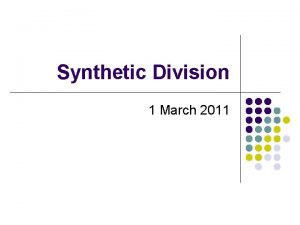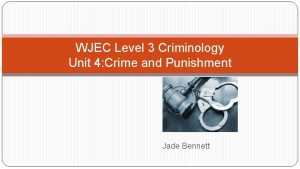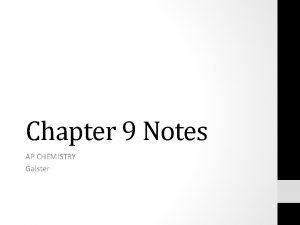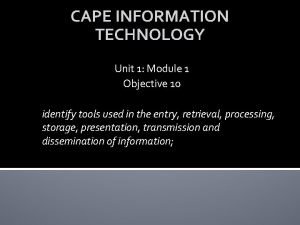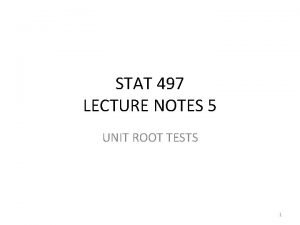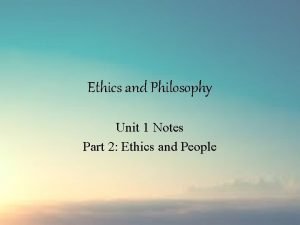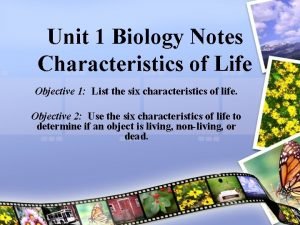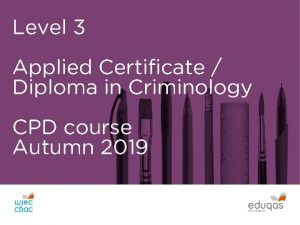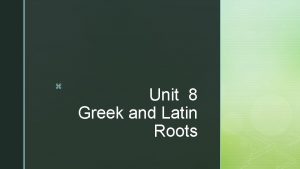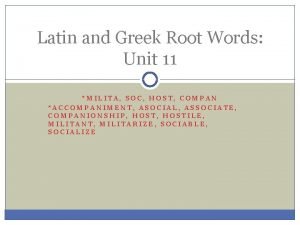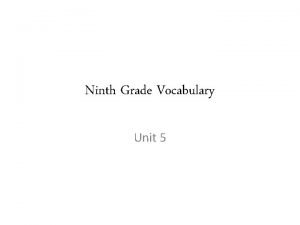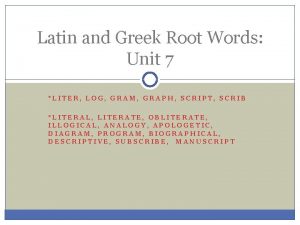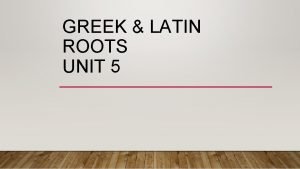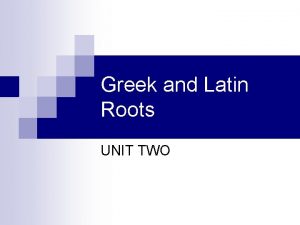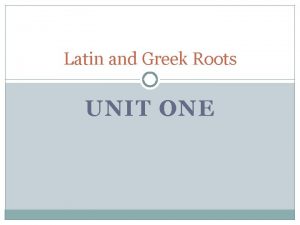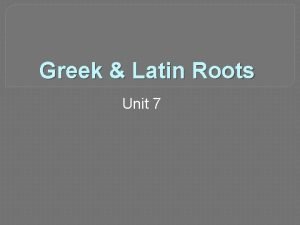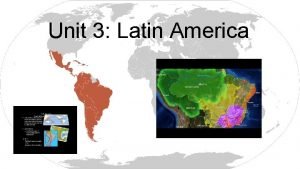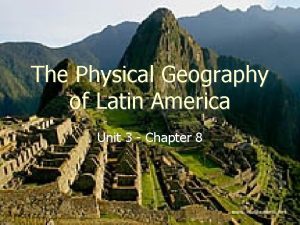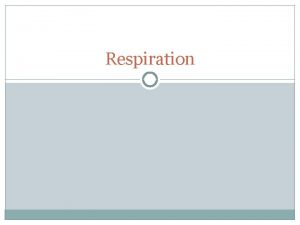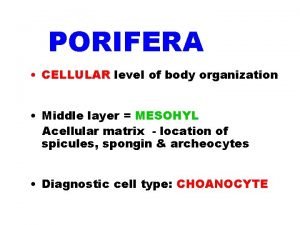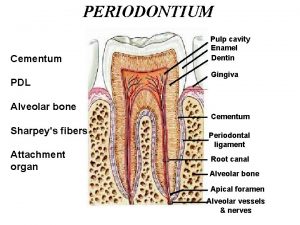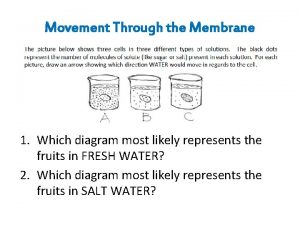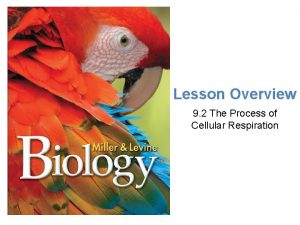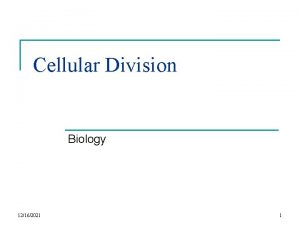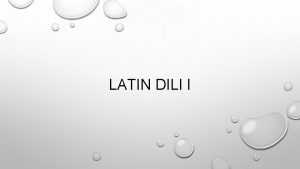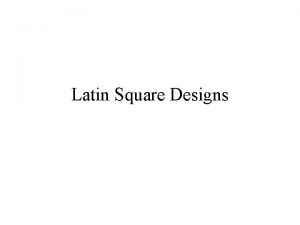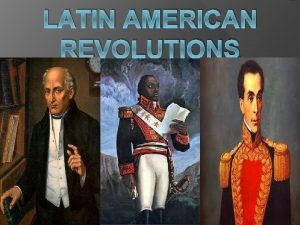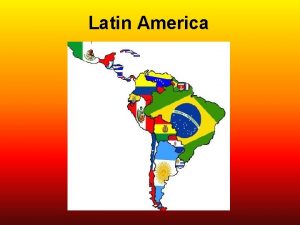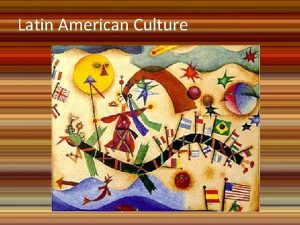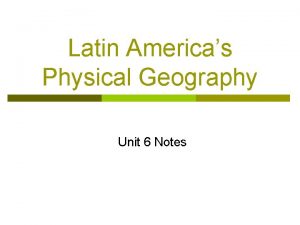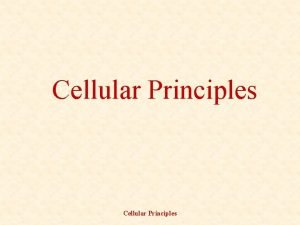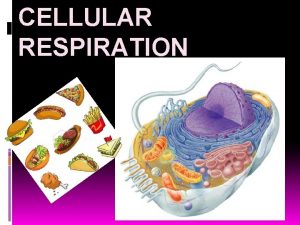UNIT 05 NOTES Cellular Division UNIT 05 LATIN























































- Slides: 55

UNIT 05 NOTES Cellular Division

UNIT 05 LATIN ROOT WORDS

LATIN ROOT WORDS Latin Root Word Definition 1. Chromo 2. Some 3. Centro 4 Mere 5. Kine 6. Di 7. Hap 8. Tetra 9. Homo 10. Logos 11. Mei Color Body Center Part To Move Double Single Four Same Proportion or ratio To lessen

OBJECTIVE 1 I can explain the importance of cell division to living things

WHY DO CELLS DIVIDE? 1. Reproduction 2. Growth and Development cell - all multi-cell creatures start out as a single 3. Repair and Replacement - millions of our cells die and are replaced every second of every day

REPLICATION VIA MITOSIS VIDEO https: //www. youtube. com/watch? v=m 73 i 1 Zk 8 EA 0

BACTERIA GROWTH https: //www. youtube. com/watch? v=g. Ewz. Dydci. Wc

GROWTH AND DEVELOPMENT VIDEO https: //www. youtube. com/watch? v=P 1 h 611 s. Nji 8

REPAIR AND REPLACEMENT VIDEO https: //www. youtube. com/watch? v=Cf 3 c 5 Um 5 g. Hc

WHY CAN’T WE REGENERATE LIMBS? https: //www. youtube. com/watch? v=QFa 6 j. P 6 Wgz. M

CHROMOSOMES Objective 2: I know the two components that make up a chromosome.

CHROMOSOMES

CHROMOSOME *Chromosome: DNA and proteins tightly coiled together

DID YOU KNOW: If you put all the DNA molecules in your body end to end, the DNA would reach from the Earth to the Sun and back over 600 times (100 trillion times six feet divided by 92 million miles)

ACTIVITY In every cell of your body is about 6 feet of DNA! How does it all fit? Try to fit your DNA (string) into your Nucleus (Circle on Paper) You can try using some proteins (beads) to help you out.

CHROMOSOME CONDENSATION Objective 3: I know the four levels of condensation for DNA.

CHROMOSOME PARTS DNA A nucleic acid that contains the information for our genes.

CHROMOSOME VOCABULARY Nucleosome DNA wrapped around a protein called Histone

CHROMOSOME VOCABULARY Chromatin DNA and proteins wound up together into a cord like structure

CHROMOSOME VOCABULARY Chromosome Coiled up Chromatin

BUILDING A CHROMOSOME DNA Nucleosome Chromatin DNA 1. DNA is wound around the protein histone 2. Nucleosomes pack together to become chromatin 3. Chromatin packs together to become chromosomes

DIPLOID AND HAPLOID CELLS Objective 4: I know the difference between Haploid and Diploid Cells

CHROMOSOME SETS *Every organism has a unique number of chromosomes. Humans Fruit Fly Carp Adders tongue Dog = = = 23 Chromosomes 4 Chromosomes 52 Chromosomes 63 Chromosomes 39 Chromosomes Ploidy the number of sets of chromosomes in a cell Haploid Number (1 N) The number of chromosomes in a single set

BUILDING WORDS DI – PLOID =2 Sets of chromosomes HAP –PLOID = 1 Sets of chromosomes

FRUIT FLY CHROMOSOMES The Fruit Fly has 4 distinct chromosomes. 1 Chromosome Set

HUMAN CHROMOSOMES Chromosomes from a DIPLOID Cell How many chromosomes are there? 46 How many would there be in a HAPLOID CELL? 23 What is the Haploid Number for Humans 23

HAPLOID AND CELLS *Different DIPLOID Cells have different number of sets of chromosomes. Haploid (1 N) A haploid cell has 1 set of chromosomes. Diploid (2 N) A diploid cell has 2 set of chromosomes. *The Majority of your cells have two sets of chromosomes and are considered to be diploid.

All Cells No Nucleus Prokaryotic Eukaryotic Plant Haploid Diploid Animal Haploid Diploid

OTHER NAMES FOR HAPLOID AND DIPLOID CELLS Haploid Cells Diploid Cells Sex Cells Gametes Germ Cells Body Cells Somatic Cells Liver, Skin, Brain, etc.

HOMOLOGOUS CHROMOSOMES Objective 5. I can describe what makes two chromosomes homologous

HOMOLOGOUS CHROMOSOMES Homo = Same Logous = Ratio Homologous Chromosomes are chromosomes from different sets that have the same genes, look similar, and have the same ratio of light and dark areas. Homologous Chromosomes Homologous

HOMOLOGOUS CHROMOSOMES PRACTICE http: //www. execulink. com/~ekimmel/karyotype_drag_and_drop. swf

WHERE DO YOUR CHROMOSOME SETS COME FROM? 1 set comes from your mother 1 set comes from your father

TYPES OF CHROMOSOMES Autosomes Any chromosomes not considered a sex chromosome or is not involved in sex determination. Sex Chromosomes a chromosome involved with determining the sex of an organism. X or Y

KARYOTYPES

KARYOTYPES Karyotype – a picture of all the chromosomes in the cell of an organism matched up with their homologous pairs.

This is a human karyotype. How many chromosomes do humans have? 23 chromosome pairs 46 chromosomes

HUMAN KARYOTYPE

HUMANS All human cells, except for gametes, are diploid. They have 2 sets of 23 chromosomes 1 set comes from your father 1 set comes from your mother Humans have two sets of chromosomes Two sets of 23 for a total of 46 chromosomes

TYPES OF REPRODUCTION

TWO TYPES OF REPRODUCTION Asexual Reproduction reproduction without the fusion of gametes (Mitosis) to make an exact copy of the original cell 2 N Sexual Reproduction with the fusion of gametes 1 N + 1 N = 2 N

FERTILIZATION Fertilization the action or process of fertilizing an egg via the fusion of the male sperm with the female egg to form a zygote. Zygote a diploid cell resulting from the fusion of two haploid gametes; a fertilized egg.

FERTILIZATION VIDEO

CELL CYCLE

HOW DO WE KNOW WHEN CELL DIVISION OCCURS? A series of events that take place in eukaryotic cells leading to their division and duplication is es kin to Cy Cell Cycle G 1 Phase Telophas e Anaphase S Phase Metaphase Prophas e G 2 Phase

THE TWO MAJOR PHASES OF THE CELL CYCLE Interphase The resting phase between mitosis or meiosis Cytokine sis G 1 Phase Telophas e Anapha se M Phase The phase where mitosis (or meiosis) and cytokinesis occurs. S Phase Metaphase Prophas e G 2 Phase

WHAT ARE THREE PHASES OF INTERPHASE? G 1 – Gap 1 – Phase Gap 1 phase – cell gets larger and prepares for mitosis G 1 Phase Synthesis phase – DNA makes a copy of itself G 2 – Gap 2 – Phase Gap 2 phase - final preparation for mitosis G 2 Phase

S PHASE AND CHROMOSOMES Centromere: Center Part that binds two sister chromatids together. Kinetechore: an area on a chromosome where spindle fibers attach to help move the sister chromatids apart. Sister. Chromoso Chromatid. Sister Chromatid (original) (copy) me Chromoso me

S PHASE AND CHROMOSOMES Before S Phase Centromer e Kinetochor e After S Phase Centromer e Kinetochor e Chromoso me Sister Chromatid (copy) (original) Chromoso

CHROMOSOME VOCABULARY Centromere The part on the chromosome that connects the two chromatids together Original Chromatid Copied Chromatid Chromosome

CHROMOSOME VOCABULARY Kinetechore Attachment point for spindle fibers Original Chromatid Copied Chromatid Chromosome

MITOSIS ORGANELLES VOCABULARY Centriole An organelle that organizes the spindle fibers that assist in mitosis and cytokinesis. Spindle Fibers Filaments that attach to a kinetechore and pulls the two chromatids apart.

CHROMOSOME STRUCTURE Spindle Fibers Centromeres Centriole Kinetechore Original Chromatid Copied Chromatid Chromosome

WHAT ARE THE TWO PHASES OF M-PHASE? Mitosis The process wherein the nucleus divides into two nuclei Cytokinesis G 1 Phase Telophas e Anapha se S Phase Metaphase Prophas e Cytokinesis The process wherein a cell divides into two G 2 Phase

WHAT ARE THE FOUR PHASES OF MITOSIS? Prophase Metaphase Anaphase Telophase P M A T Cytokinesis G 1 Phase Telophas e Anaphase S Phase Metaphase Prophas e G 2 Phase
 Long division and short division
Long division and short division Synthetic divisio
Synthetic divisio Short division vs long division
Short division vs long division Synthetic division examples
Synthetic division examples Synthetic divison
Synthetic divison Conversion notes brutes en notes standard wisc 5
Conversion notes brutes en notes standard wisc 5 Voluntary trade cloze notes 1
Voluntary trade cloze notes 1 Traje tipico de soloma
Traje tipico de soloma Why called latin america
Why called latin america Chromosome diagram
Chromosome diagram Literary devices in what a wonderful world
Literary devices in what a wonderful world Formal division of lines in a poem
Formal division of lines in a poem Unit 10, unit 10 review tests, unit 10 general test
Unit 10, unit 10 review tests, unit 10 general test Wjec criminology revision notes unit 4
Wjec criminology revision notes unit 4 Slip chart in spm
Slip chart in spm Ap chemistry unit 9 notes
Ap chemistry unit 9 notes Cfe higher chemistry
Cfe higher chemistry Cape information technology unit 1 notes
Cape information technology unit 1 notes Stat root word
Stat root word Ratios rates and unit rates guided notes
Ratios rates and unit rates guided notes Hhd study design
Hhd study design Professional ethics unit 1 notes
Professional ethics unit 1 notes Unit 1 biology notes
Unit 1 biology notes Wjec criminology unit 3 answers
Wjec criminology unit 3 answers Computer graphics unit 2 notes
Computer graphics unit 2 notes Greek theater has its roots in __________.
Greek theater has its roots in __________. Fort latin root
Fort latin root Greek and latin roots and affixes unit 1 answer key
Greek and latin roots and affixes unit 1 answer key Unit 5 vocabulary from latin and greek roots
Unit 5 vocabulary from latin and greek roots Words with the root erg
Words with the root erg Root word log
Root word log Latin root vid
Latin root vid Pel latin root
Pel latin root Sta root word
Sta root word Words with the root erg
Words with the root erg Fort latin root
Fort latin root Latin america physical geography
Latin america physical geography Unit 3 latin america
Unit 3 latin america Molecular level vs cellular level
Molecular level vs cellular level Redox reaction in cellular respiration
Redox reaction in cellular respiration What is the correct equation for cellular respiration?
What is the correct equation for cellular respiration? Cellular respiration steps
Cellular respiration steps Types of respiration
Types of respiration Fermentiert
Fermentiert Why is cellular respiration important
Why is cellular respiration important Cellular organization in porifera
Cellular organization in porifera The process of photosynthesis and cellular respiration
The process of photosynthesis and cellular respiration Summary equation for cellular respiration
Summary equation for cellular respiration How are internal and external respiration alike
How are internal and external respiration alike Photosyntehsis equation
Photosyntehsis equation Cementum
Cementum Photosynthesis recipe card
Photosynthesis recipe card Cellular network basics
Cellular network basics What happens during glycolysis
What happens during glycolysis Overview of cellular respiration
Overview of cellular respiration Aerobic respiration overview
Aerobic respiration overview




